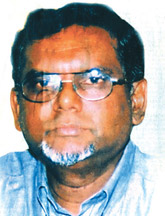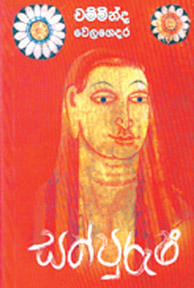Biofiction or fictobiography
 Henry Sibson, a 19th century British sculptor in his memoirs had
mentioned a 'hunched back' stonemason employed at the Notre Dame. This
stonemason could have been the real-life inspiration for Victor Hugo's
novel, 'The Hunch Back of Notre Dame'. In the same manner, to Ian
Fleming, the real life Operation Target-Force in 1944, could have given
the idea for his novel 'Moonraker'. Henry Sibson, a 19th century British sculptor in his memoirs had
mentioned a 'hunched back' stonemason employed at the Notre Dame. This
stonemason could have been the real-life inspiration for Victor Hugo's
novel, 'The Hunch Back of Notre Dame'. In the same manner, to Ian
Fleming, the real life Operation Target-Force in 1944, could have given
the idea for his novel 'Moonraker'.
Many works of fiction are based on real life characters or incidents.
Today it would not be possible to write a totally fictitious novel or a
short story, unless the author has a completely blank mind, has no
knowledge of history and is not aware of the happenings around him.
Most biographies also contain a certain amount of fiction, in the
imagined dialogues and other embellishments. Autobiographies could
include half truths and sometimes even untruths, or the truth might be
stretched a little, to grip the reader's attention, like Elia Kazan did
in 'A Life'. He begins his autobiography, "I used to spend most of my
time straining to be a nice guy so people would like me. Now I'm out of
show business and I've become my true grumpy self." That is what makes
the New York Times say about the book, "He is relentless in
self-revelation, introspection and confession...". Sometimes,
non-fiction can read better than fiction.
'The Married Man', would sound strange for a title of a biography of
D. H. Lawrence of all people. But the title is defended by the author
Brenda Maddox, who tries to examine his life "through the greatest
contradiction in it: his marriage, taking it not as just another aspect
of Lawrence but as the encompassing whole.....a mismatch made in
heaven...but which lasted until the end of his life".
 |
|
Eric
Ilayaparachche’s Lalitha
Samaya develops a story woven around the life of a musician |
 |
|
Chamminda
Welagedara has
handled a very dull and very
much hackneyed subject of
politics in Sri Lanka to give
us an outstanding novel |
Coming back to fiction, Chamminda Welagedara, in his new book
'Sathpurusha', has handled a very dull and very much hackneyed subject
of politics in Sri Lanka to give us an outstanding novel, developed
around real-life people and specially the leftist movement and the
leaders of our country. Some readers would be able to identify the
politicians and even the protagonist and some of the political events a
few decades back. However, to really enjoy 'Sathpurusha' as a work of
fiction, we should forget the real-life characters, and read it as a
novel.
The same could be said about Eric Ilayaparachche's novel 'Lalitha
Samaya', where he developed a story woven around the life of a musician.
Though the book was short-listed for the Swarna Pusthaka Award, perhaps
it did not get due recognition, because the panelists may have
identified the 'Master' and were able to recognize many of the incidents
and characters described in the novel. However to a reader who did not
know the 'Master', who had not followed his career and who is not
familiar with the incidents after his death, 'Lalitha Samaya' could be
enjoyable as a great novel.
Yukio Mishima based 'The Temple of the Golden Pavilion' on a real
life incident, and the Introduction to the English translation gives a
detailed description of the incident and the real people involved. The
novel would not be the same to a reader who skips this introduction and
another who reads the complete introduction before reading the novel.
Sometimes the protagonist gets into the mind of the writer, and that is
what probably happened to Mishima who went further than his own
character, Mizoguchi, by committing suicide immediately after he
completed his tetralogy, 'The Sea of Fertility'. In The Temple of the
Golden Pavilion', Mizoguchi throws away his bottle of Arsenic, and
lights a cigarette "after a good job of work", as he decides to live.
Pamulaparti Venkata Narasimha Rao's 'Insider' is offered to us as a
novel. The author himself says it is neither regular autobiography nor a
work of fiction. We identify Anand as Narasimha Rao's alter ego, and
walk with him through his political career as a 'gentleman politician'
in the fictitious Afrozabad State and then Panchavati. Perhaps the
author was trying to describe the person he had wanted to be, or wished
that he had been, and then it is a work of fiction, enjoyable by an
'outsider'.
If Barack Obama was not already dreaming about his aim for the White
House, his autobiography, 'Dreams from my Father' is probably a true
autobiography, without much embellishments or distortions. It was in the
Time Magazine Top 100 non-fiction, of biographies published since 1923.
If Obama's story were to be written by another, after he became
president, it would have read like 'Abe Lincoln, Log Cabin to White
House'.
In 1998, the Modern Library ranked 'I, Claudius' fourteenth on its
list of the 100 best English-language novels of the 20th century. 'I,
Claudius' is creativity at work, through the imagination and historical
study by Robert Graves. If we can ignore the history of the Roman
Empire, Claudius, Caligula and Julius Caesar, then it is a real novel,
like its sequel, 'Claudius the God'. Coming back to Victor Hugo, he had
spent thirty years working on a 'sociological novel', amassing notes on
prison conditions, poverty, and about Monsignor Miollis, who appears as
Monsignore Myriel in 'Les Miserable'. "The actual world supplies only
the rough outlines of models; it is the artist who touches in the
high-lights and paints the shadows", wrote Andre Maurois in 'Olympio:
The Life of Victor Hugo'.
A new genre or a new name for same old books, is called 'Biofiction'
or 'Ficto-biography', telling other people's stories in fascinating and
highly readable ways. Miguel Fernandes Ceia writes, ""all fiction is
biographical and all biography is fictional', quoting from Philip Roth's
'My Life as a Man' and his autobiography 'The Facts'.
Where do we draw the lines between Fiction, non-fiction and faction,
and why do we have to draw such lines?
[email protected] |



